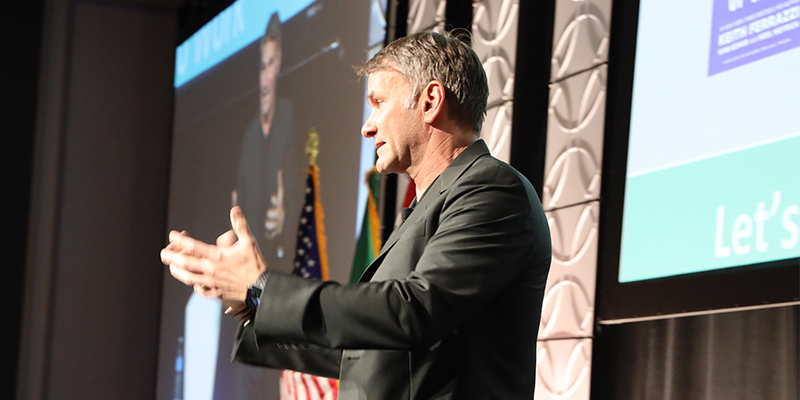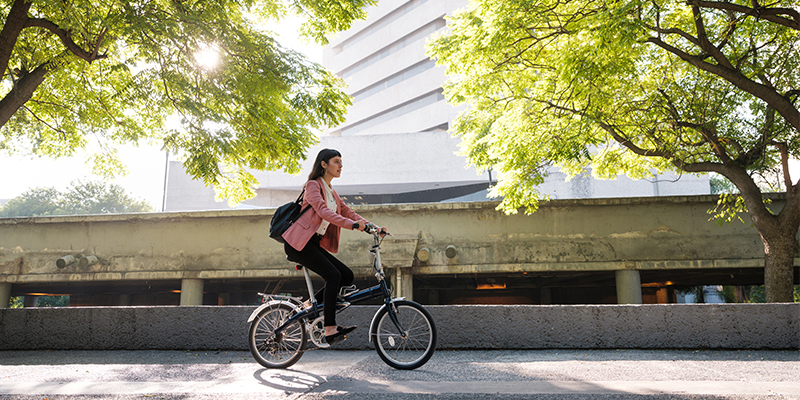After the COVID-19 pandemic sent everyone home from the office and into the remote workplace, “there was a lot of talk about ‘when do we go back to work?’” said Keith Ferrazzi, bestselling author and founder and chairman of Ferrazzi Greenlight, a global consulting and coaching firm, at CRE.Converge 2022. “Let’s stop talking about when we go back to work – to how things used to be – and talk about how we go forward.”
Ferrazzi shared his predictions for the evolving workplace and some best practices for keeping teams connected, collaborative and invested in a hybrid environment.
“All the change that happens in the future of work must happen at the team level,” he said.
“Instead of using precious meeting time to read aloud reports, use that time to argue, to debate,” Ferrazzi said. “Collaborate in the cloud before you collaborate in a physical room. Instead of reading from a deck, share a video in advance of a meeting. Share a collaborative document where people can share their thoughts beforehand. Then come to the meeting ready for active discussion.”
Inviting virtual collaboration in advance of a meeting has several benefits. It allows many more people to be involved. It also allows people to be more bold, more candid.
We’ve all seen the small group that sticks around after the large in-person meeting to gripe, gossip or override decisions just made. “That meeting after the meeting kills organizational innovation,” Ferrazzi said.
Instead, adopting an approach of “inclusion advocacy” can enfranchise team members. “In an average meeting of 12 people, four people feel like they’ve been heard,” Ferrazzi said. But inclusion advocacy can help change that. It means ensuring everyone has access to contribute their thoughts; being clear about deadlines and formats; monitoring who is contributing; and inviting input from anyone missing to ensure all voices are heard. It’s critical to ensure the process provides a safe space for all thoughts and opinions.
This idea of a “safe space” is key to employees’ sense of psychological safety. Small virtual breakout rooms in particular are a “superfood of psychological safety,” Ferrazzi said. He found there is an 85% higher degree of psychological safety when professionals move into these smaller breakout groups. “You get more full truth.” (Many virtual meeting platforms can quickly sort attendees into smaller breakout rooms, and after an allotted time for discussion or brainstorming, bring the entire group back into one virtual meeting room.)
There’s a lot of talk about the challenge of building a company culture in a virtual-first or hybrid environment. “Company culture is nothing more than an aggregated set of relationships,” Ferrazzi pointed out. There are ways to foster those bonds and cultivate those working relationships, even remotely.
He shared an example: a weekly “energy check-in.” At regular virtual team meetings, team members share their energy level that week on a scale of zero to five, with zero being “face-down in a puddle,” and five being “riding roller skates on a rainbow.” That opens a dialogue and establishes a cadence of team members checking up on each other regularly; keeping tabs on their teammate’s energy levels.
Is effective mentorship possible in a hybrid workplace? “One of the least-tapped-into tools of the workplace are peer-to-peer support groups,” Ferrazzi said. He shared the case of a financial firm which established peer-to-peer coaching among their financial advisors. They found those individuals in the peer-to-peer groups had 50% more net new business after participating in the program.
“Organize these types of support groups for new hires or team members with similar roles. And make the meetings in-person on a monthly basis.”
Remote work is here to stay, Ferrazzi said, but being physically collocated is critically important too.
“There’s nothing as precious as the social connection of humans together in the room. It can never be replaced,” said Ferazzi. These social connections are critical for any occasion where we’re tapping into emotions – celebrations, major milestones, bonuses, etc. Gritty issues, too. “We all do better wrestling challenging issues face-to-face,” he added.
Stop leaning on the conversation about two days or three days per week in the office, Ferrazzi said. “That’s lazy. We need to look at how we make work better than it was.”
This post is brought to you by JLL, the social media and conference blog sponsor of NAIOP’s CRE.Converge 2022. Learn more about JLL at www.us.jll.com or www.jll.ca.















